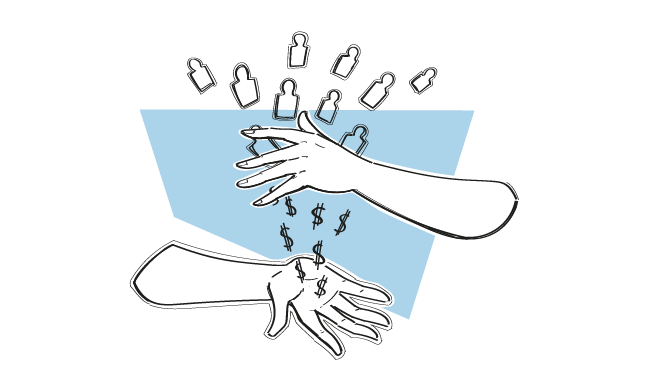This blog post is a chapter of an ebook I wrote, called “How to Grow SaaS with Email”. It includes lots of useful advice from top SaaS experts and email templates for each job to be done. Go grab a copy!
This chapter is about increasing free trial conversion.
***
Free trial is a sample of what your product can do for the users. They take it for a test drive to see if that’s the vehicle that will get them where they want to go.
When you’re building a user onboarding process, the single most important thing is — as product-led growth expert Wes Bush puts it — to help people get better at what your product enables them to do.
To do so, you need to take a look at the big picture and learn why they’re using your product. What’s the context?
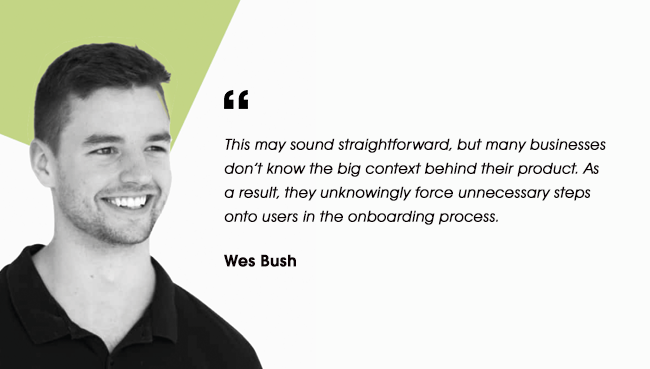
When Woodpecker users sign up for the free trial, they use the tool to generate leads, increase their trial to paid conversion, drive traffic to their websites… and all the other stuff I’m talking about in this ebook (wink-wink).
With the context in mind, you’ll be able to onboard users by showing them only the necessary steps that’ll move them towards their desired outcome.
What determines when users are going to convert?
According to product growth expert Michał Fiech, it depends on a couple of factors.
Creating an account-wide notification system when the trial is about to expire is one way to boost the conversion.
If you put trial users at a full-featured plan, most of them will pay right before the trial ends (or even after).
If you design your trial to offer limited features, you might be able to speed up the process as well — you need to make sure that users who reached the “aha” moment have to convert to keep using the tool in a more efficient way.
Another factor is how and when you nudge the users to pay.
So if you’d like to give them a lil’ nudge, which channel would be the most effective?
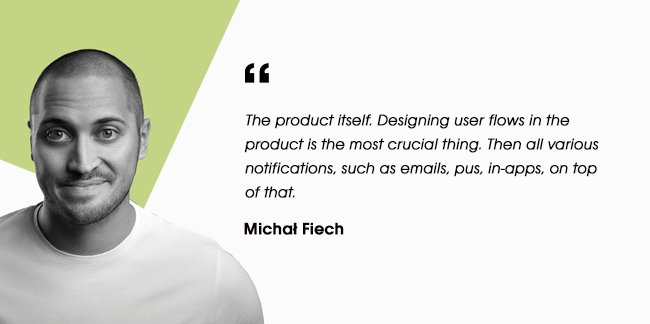
So what emails can you put in your user onboarding sequence to boost your trial engagement?
The types and number of emails you send depends entirely on your strategy — you might do more, you might do less, you might send different kinds of messages. But if you don’t know where to start, try these 5 emails that Wes singles out as the main ones when onboarding users:
- Welcome email
- Usage tips
- Sales touches
- Usage reviews
- Expiry warning
# Pro tip: don’t use html in your onboarding sequence. Plain and simple is the way to go. Pictures and elaborate graphic templates might confuse users or divert your messages from the main inbox.
Now…
Welcome email
The first email in the sequence has two main functions: to build a habit in your audience to open your emails and set the users’ expectations on what’s next.
What you put between the “thank you” and your CTA will vary. Do you want your welcome email to be more of an introductory one? To ask what job the user wants to get done with your product? To build a connection with them? Or pull them into the product?
Hi {{First_Name}}, Thanks for signing up to (your tool)! It’s awesome to see you here. We’ve built our app to help professionals like you (what your product helps with). I want you to get the most out of it, so I’ll be sending some resources your way in the next few days. First up: 15 tips to help you (what they want to achieve). In the meantime, feel free to drop me any questions that may arise. Best,
Dave
Usage tips
This one focuses more on your product’s features and what they can do for the user.
So, you might want to direct the user to a specific place in the app, offer best practices tips, try to bring abandoned users back, or link to specific blog posts or help articles.
Hey {{First_Name}}, Your first (element) is up and running! Why not set up (another element) next? Here’s a short video to help you with the setup>> See for yourself how it can (help them to get closer to their desired outcome)! Talk soon,
Dave
Sales touches
While all the emails should be personal, this should be super personal. You can e.g. celebrate the user’s success in your app (aka, them achieving the “aha” moment) and offer how they can use it to get more out of the product, ask if they have any questions, or offer them a demo.
Your goal with this email is to make sure the user achieves more with your product.
Hey {{First_Name}}, Wow, time sure flies! You’re already halfway through your trial. Did any questions come up? I’d be happy to walk you through the app and show what else you can get done — and how. Feel free to pick a slot for a demo from my calendly>> Talk soon,
Dave
Usage reviews
Show the user how much they’ve achieved with your product so far and offer a suggestion for what they can do next. Use metrics (pick the key metric for your product).
Thanks to this, the users will see the value quicker.
Hi {First_Name}, Congrats! You’ve reached (whatever it is users can reach in your product). That’s quite impressive. What would you say about (increasing the results by using another feature)? Click here to smooth your process>> Best,
Dave
Expiry warnings
Reminders that the trial will expire in a week/few days.
With this email, it’s easy to slip into a salesy tone — but don’t be pushy. Be helpful.
Hi {{First_Name}}, Thanks for using (your product)! Hope you’ve enjoyed it so far. Just wanted to remind you that your trial is about to expire in a few days (June 29). You’ll still have access to your data after it ends, but won’t be able to perform any actions. If you have any questions, just hit reply! If you’d like to keep using (your product), you can subscribe here>> Best,
Dave
What to avoid in your user onboarding emails?
- Don’t assume users will be ready to buy straight away
- Don’t focus on your benefit instead of theirs
- Don’t send one-to-all kind of messages with no personalization
- Don’t try to seal the deal no matter what
If you’re using a tool that sends time-based emails (instead of behavior-based), be sure you’re:
- Answering common questions and objections at a given stage of the funnel
- Educating users on how you can solve their pain point
- Focusing on the benefits, not features of your product
- Offering a clear CTA (and just one)
# Pro tip: you might segment your trial user base and set up two different types of campaigns: one that is aimed at the users that best fit your ICP (this campaign is personalized and aimed at starting a conversation with the lead), and a different one that onboards the users that are less likely to convert into paying customers (still personalized, but not focused on as much contact with a salesperson).
***
Liked what you read? Get the ebook and see how else you can use email to grow your SaaS.
READ ALSO
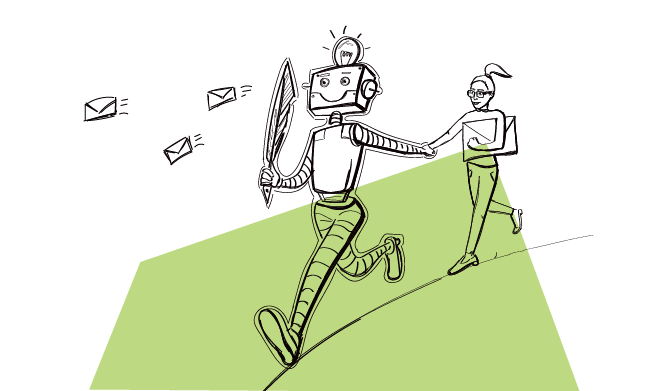
SaaS User Onboarding Emails: Tools & Strategies to Increase Conversion
It’s impossible to retain 100% of your trial users. In some cases your product turns out not to be the best fit for them, their priorities change or they’re hoping you’ll develop it in a direction that’s just not aligned with your vision. There are other reasons trial users don’t convert, though - ones that you can control.
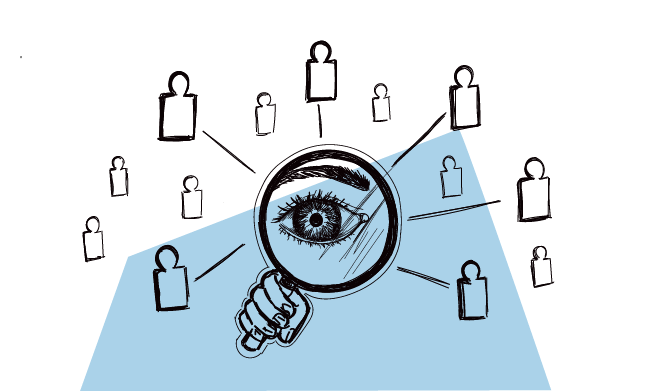
SaaS Partner Program – How to Find and Pitch to Partners?
Getting new partners for your SaaS Partner Program might be challenging. Getting new partners that fall within your Ideal Partner Profile might be even more difficult. With the right tools in the box, though, you might find it as easy as can be. Follow this clear 3-step path to get more partners and an increasing stream of new leads. Let’s start, shall we?
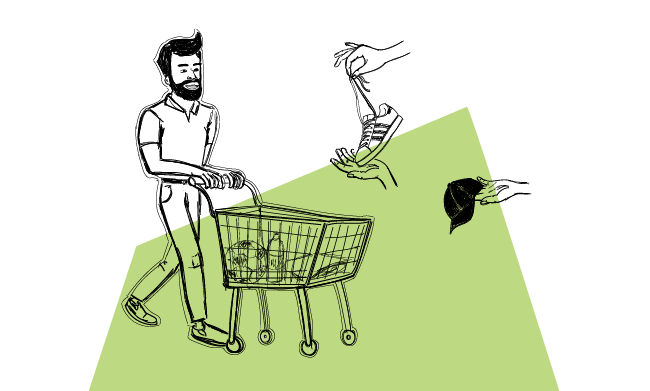
What is Upselling and Cross-selling and How to Apply These Techniques in a SaaS Sales Process?
Although an e-commerce sales process greatly differs from the sales we usually cover here, I believe there are some tactics that can be taken from it and applied to your own SaaS sales process. For instance, upselling or cross-selling on the order value. Let's see how you can use e-commerce's tactic of upselling and cross-selling to boost your sales.

